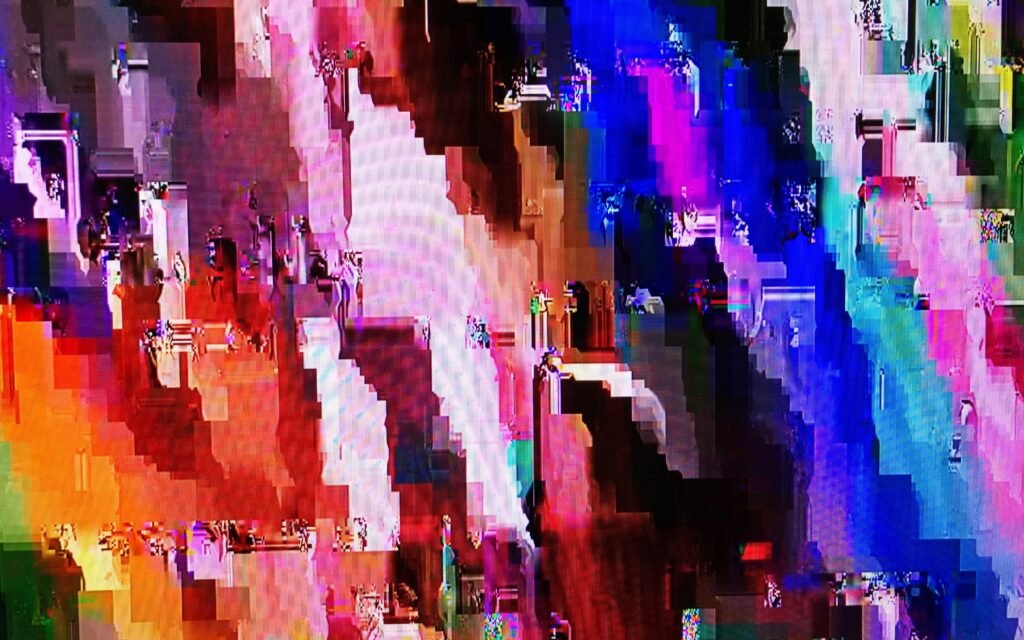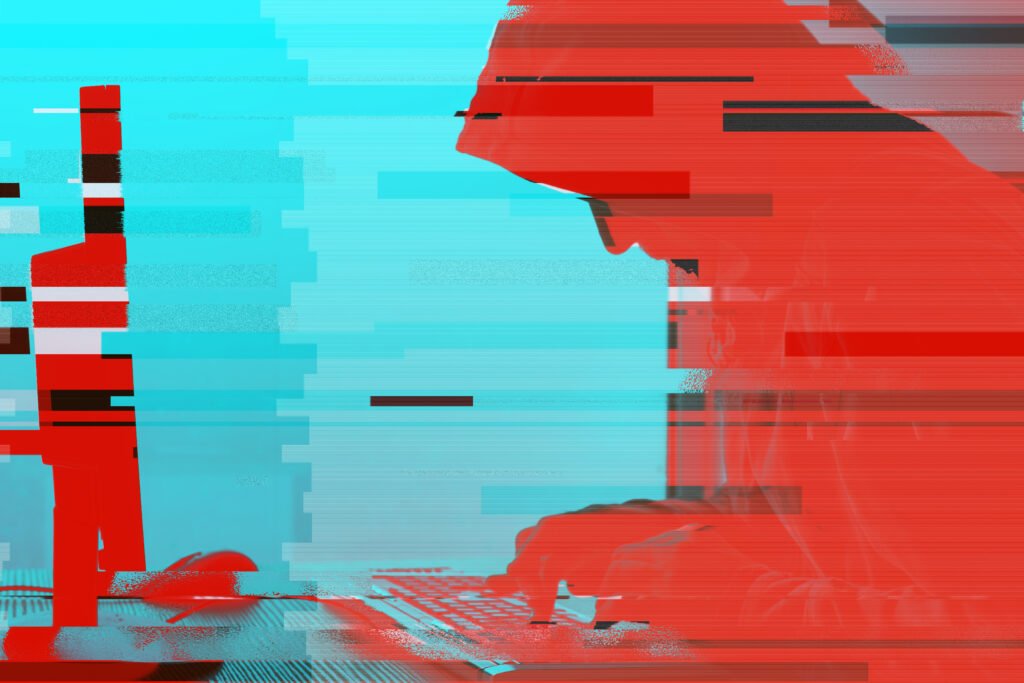Glitch art grows as a creative force within digital art in the 21st century. Artists choose error, embrace failure, and turn noise into meaning. This decision demands courage, technique, and a clear worldview.
Moreover, glitch aesthetics challenge the gaze with ruptures and surprises. Viewers encounter misaligned pixels, blown-out colors, and corrupted frames. Then they discover new visual narratives that emerge from the unpredictable.
What Defines Glitch Art Today
Glitch art means deliberately experimenting with failures in digital and analog systems. Creators corrupt files, manipulate codecs, and explore interference. They plan each step with intention. Therefore, error does not appear by chance. It appears as an aesthetic choice and as critical thinking about technology and culture.
According to the book Glitch: Designing Imperfection, by Iman Moradi, published in 2009, the glitch reveals a distinct aesthetic that arises from the collapse of control and the breakdown of expected patterns. The author presents methods, examples, and visual readings that show how intentional error can create consistent meaning. Thus, the artist organizes instability and finds language within noise.
In addition, theoretical debate has advanced decisively. According to the book The Glitch Moment(um), by Rosa Menkman, published in 2011, the glitch functions as a turning point that exposes the machinery of media. The author describes the passage from accident to conscious artistic gesture and argues that domesticated glitch loses conceptual power. Consequently, a work must sustain risk, instability, and friction to preserve its strength.
However, glitch art does not live on theory alone. It unfolds through concrete, practical processes. Artists practice databending, alter file structures, swap headers, and test cross-readings. Creators also practice datamoshing, force transitions between frames, and explore circuit bending with physical devices. In every case, the artwork emerges from technical and poetic decisions that accumulate to produce impact.
Foundations, Technique, and Dialogue with Digital Art
Digital art provides a fertile ecosystem for glitch practice. Dedicated tools support rigorous processes. Artists control palettes, iterate versions, and document each attempt. Furthermore, they observe the limits of every software and codec. When a program fails, the creator records the moment, interprets the result, and decides how to proceed.

According to the book Digital Art, by Christiane Paul, published in 2023 in its fourth edition, digital art has consolidated practices, categories, and critical vocabularies that include glitch as a field of aesthetic and cultural investigation. The author maps works, contexts, and formats that transform screens, façades, and immersive environments. As a result, glitch moves beyond a niche and engages museums, festivals, and collections.
At the same time, glitch art converses with graphic design, typography, and photography. Many creators blend pixels with text layers, noise with typographic composition, and interference with portraiture. This mix generates hybrid languages. Therefore, the final work escapes rigid labels and reaches diverse audiences.
Exhibitions, Cities, and the Preservation of Error
The exhibition of glitch art evolves beyond the domestic screen. Galleries and museums open space for experiments that occupy entire environments with light and color. In São Paulo, the SESI Digital Gallery on Avenida Paulista serves as a monumental showcase for large-scale digital art. Artists render works through pixel mapping and make the dialogue between architecture, technology, and language visible. This kind of urban equipment broadens access to glitch art and sparks encounters with wide audiences.
Besides exhibiting, the scene also preserves. Catalogs, books, and repositories become essential. According to the book Glitch: Designing Imperfection, by Iman Moradi, published in 2009, documenting error helps analyze practices and build a technical repertoire for new generations. Therefore, artists record versions, describe processes, and share methods. In this way, the community grows, exchanges experience, and refines criteria.
Nevertheless, preserving glitch brings challenges. Corrupted files may stop opening. Codecs can disappear. Software may become obsolete. Consequently, curators and artists design strategies of migration and emulation. They test open formats, keep logs, and describe reconstruction procedures. Thus, future audiences can rediscover the same ruptures that surprise and move us today.
Glitch art does not merely show errors. It chooses error as method, thought, and poetry. It turns technical failures into metaphors for a world in constant update. Above all, it invites audiences to see beauty where no one expected it. When a frame collapses, a new image is born. When a pixel fails, an idea lights up. In the end, glitch art confirms a simple and powerful principle: every imperfection can become language. Those who create with courage find power in noise, form in collapse, and a future in failure.



